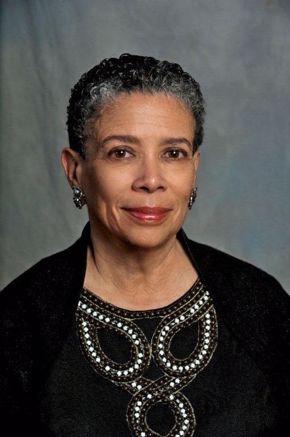Close-Up on “Black Art in Houston” August 4, 2020

Alvia J. Wardlaw, director of the University Museum at Texas Southern University.
Soul of a Nation: Art in the Age of Black Power
Installation view of Soul of a Nation: Art in the Age of Black Power.
Earlie Hudnall, Jr., From the Fourth Ward, 1986, gelatin silver print, the Museum of Fine Arts, Houston, Museum purchase funded by Marion and Joe Mundy. © Earlie Hudnall, Jr.
Alvia Wardlaw moderates the online discussion “Black Art in Houston” on Saturday, August 8, at 3 p.m. The fourth of five virtual panel discussions accompanying the exhibition Soul of a Nation: The Art of Black Power, this conversation features Soul of a Nation artist Earlie Hudnall, Jr., Michelle Barnes of Houston’s Community Artists’ Collective, and Houston artist Nathaniel Donnett.
Wardlaw, director of the University Museum at Texas Southern University, was previously a curator at the MFAH. Here, she discusses the enduring legacy of the TSU art program and the unique qualities of Houston’s Black art scene.
What aspects of the Black art scene are unique to this city?
Houston has two unique qualities with regard to the Black arts community. First, there is an atmosphere of accessibility and collaboration that has continued through generations of African American artists from the 20th century into the 21st. There is such a sense of connection among Black artists, partially because of the lack of gallery representation for a considerable amount of time and also because of the positive informality of the general art scene in the city. Second, the art department at Texas Southern University has always served as a historic anchor for art students and all Black artists working in Houston.
How would you characterize the legacy of the TSU art program and the enduring impact on Houston’s artists?
As a center for the teaching of young artists of color, Texas Southern University has long celebrated diversity and the strength of global cultures. The visionary leadership of John Biggers and Carroll Harris Simms led to the development of a unique mural program, which has chronicled the history of African Americans in the country over the past 70 years as well as the development of unique terracotta shrines based upon traditional West African sculptures. The fact that both founding professors traveled to Africa to study the art and culture of various regions of the continent led to the development of an art philosophy rooted in an awareness of the richness of the African Diaspora. This continues today.
How has your understanding of the South informed your work as an art historian?
A very interesting question! I am a daughter of the South. My mother and father were born in Birmingham and Atlanta, respectively. I was born in Atlanta and lived directly across the street from the Atlanta University Center until my family moved to Houston. I literally grew up on HBCU campuses. As a child, I was shaped by the traditions of the Black community, which were part of my daily life. As an adolescent, I had the benefit of excellent Black teachers who encouraged me and my classmates to realize our dreams. This culture enabled me to recognize the value of the quilt makers of Gee’s Bend, Alabama; the ingenuity of self-taught artists; and the power of the spoken word.
► Learn more about the discussion and the panelists.
► Join the virtual discussion on Saturday, August 8, at 3 p.m. Before or after, experience Soul of a Nation: Art in the Age of Black Power at the MFAH, the final venue for the exhibition’s three-year tour. Plan ahead for your visit.
This virtual lecture series receives generous funding from Humanities Texas, the state affiliate of the National Endowment for the Humanities.





